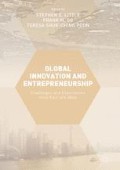Abstract
With the advent of globalisation, the ability of firms, enterprises, or countries to develop appropriate responses to change by transforming capabilities has emerged as one of the central areas of research in management science. In the globalised era, the ability of firms to renew or reconfigure existing competencies and create new knowledge for innovation has emerged as a strategically important capability (Dosi Technical change and economic theory. Pinter Publishers, 1988; Pavitt British Journal of Management, 2:41–50, 1991; Teece et al. Technology, learning & innovation: Experience of newly industrialising economies. Cambridge University Press, 1997). Despite the emergence of more comprehensive firm-level studies during the mid-1990s (e.g. Kim Technology, learning and innovation: Experience of newly industrialising economics. Cambridge University Press, 2000; Figueiredo Industrial and Corporate Change, 12(3):607–643, 2003), comparative analysis of learning and capability accumulation in firms from developing countries has been absent in this research stream.
In the case of firms from developing countries, the economic, political, and social complexities make the transformation of capabilities a challenging and difficult process. In this context, the Indian pharmaceutical industry provides us with informative case studies to explore the development of innovative process capabilities by resource-constrained firms operating in emerging countries.
Access this chapter
Tax calculation will be finalised at checkout
Purchases are for personal use only
References
Ariyanchira, S. (2010). The opportunity for India in the global biosimilars market. Pharmaphorum. Retrieved January 10, 2014, from http://www.pharmaphorum.com/2010/06/21/the-opportunity-for-india-in-the-global-biosimilars-market/
Bell, M., & Pavitt, K. (1993). Technological accumulation and industrial growth: Contrasts between developed and developing countries. Industrial and Corporate Change, 2(2), 157–210.
Cohen, W. M., & Levinthal, D. (1990). Absorptive capacity: A new perspective on learning and innovation. Administrative Science Quarterly, 35, 128–152.
Dahlman, C., Ross-Larson, B., & Westphal, L. E. (1987). Managing technological development: Lessons from the newly industrialising countries. World Development, 15(6), 759–775.
Dosi, G. (1988). The nature of innovative process. In G. Dosi, R. R. Nelson, G. Silverberg, & L. Soete (Eds.), Technical change and economic theory (pp. 221–238). London: Pinter Publishers.
Figueiredo, P. (2003). Learning, capability accumulation and firm differences: Evidence from latecomer steel. Industrial and Corporate Change, 12(3), 607–643.
Frost and Sullivan. (2011). Strategic analysis of Indian biosimilar market. Research and Markets. Retrieved January 10, 2014, from http://www.researchandmarkets.com/reportinfo.asp?report_id=1877543&tracker=related
Hedberg, B. (1981). How organisations learn and unlearn. In P. Nystrom & W. H. Starbuck (Eds.), Handbook of organisational design (pp. 3–27). New York: Oxford University Press.
Henderson, R., & Clark, K. B. (1990). Architectural innovation: The reconfiguration of existing product technologies and the failure of established firms. Administrative Science Quarterly, 35, 9–30.
Hobday, M. (1995). Innovation in East Asia: The challenge to Japan. Aldershot, UK and Brookfield, WI: Edward Elgar.
Huzair, F., & Kale, D. (2015). Biosimilars and the long game. Trends in Biotechnology, 33(5), 250–252.
Jayaraman, K. (2010). India’s Cipla sets sights on Avastin, Herceptin and Enbrel. Nature Biotechnology, 28, 883–884.
Kale, D., & Little, S. (2007). From imitation to innovation: The evolution of R&D capabilities and learning processes in the Indian pharmaceutical industry. Technology Analysis & Strategic Management, 19(5), 589–609.
Katz, J. (2000). The dynamics of technological learning during the import substitution period and recent structural changes in the industrial sector of Argentina, Brazil and Mexico. In L. Kim & R. R. Nelson (Eds.), Technology, learning & innovation: Experience of newly industrialising economics (pp. 307–336). Cambridge: Cambridge University press.
Kim, L. (2000). Korea’s national innovation system in transition. In L. Kim & R. R. Nelson (Eds.), Technology, learning and innovation: Experience of newly industrialising economics (pp. 338–360). Cambridge: Cambridge University Press.
Kogut, B., & Zander, U. (1992). Knowledge of the firm, combinative capabilities, and the replication of technology. Organisational Science, 3(3), 383–397.
Lall, S. (2000). Technological change and industrialisation in the Asian newly industrialising economies: Achievements and challenges. In L. Kim & R. R. Nelson (Eds.), Technology, learning & innovation: Experience of newly industrialising economies (pp. 13–68). New York: Cambridge University Press.
Leonard-Barton, D. (1995). Wellsprings of knowledge. Boston, MA: Harvard Business School Press.
Nonaka, I., & Takeuchi, H. (1995). The knowledge creating company. New York: Oxford University Press.
OPPI. (2001). OPPI pharmaceutical compendium. Mumbai: Organisation of Pharmaceutical Producers of India.
Pavitt, K. (1991). Key characteristics of the large innovating firm. British Journal of Management, 2, 41–50.
Prahalad, K., & Hamel, G. (1990). The core competence of the corporation. Harvard Business Review, 68(3), 61–78.
Ramani, S. (2002). Who is interested in Biotech? R&D strategies, knowledge base and market sales of Indian biopharmaceutical firms. Research Policy, 31(3), 381–398.
Simon, H. (1991). Bounded rationality and organisational learning. Organisation Science, 2(Special issue: Organisational Learning), 125–134.
Spender, J. C., & Grant, R. M. (1996). Knowledge and the theory of the firm. Strategic Management Journal, 17(Winter special issue), 5–9.
Teece, D. (2000). Firm capabilities and economic development: Implications for the newly industrialising economies. In R. R. Nelson & L. Kim (Eds.), Technology, learning & innovation: Experience of newly industrialising economies (pp. 105–128). New York: Cambridge University Press.
Teece, D., Pisano, G. P., & Shuen, A. (1997). Dynamic capabilities and strategic management. Strategic Management Journal, 18(7), 509–530.
Wechsler, J. (2011). Biosimilars development raises research questions. Applied Clinical Trials, 20(7), 20–22.
Author information
Authors and Affiliations
Editor information
Editors and Affiliations
Rights and permissions
Copyright information
© 2017 The Author(s)
About this chapter
Cite this chapter
Kale, D. (2017). Re-developing Knowledge Creation Capability: Innovating in Indian Pharmaceutical Industry under the TRIPS-Compliant Patent Regime. In: Little, S., Go, F., Poon, TC. (eds) Global Innovation and Entrepreneurship. Palgrave Macmillan, Cham. https://doi.org/10.1007/978-3-319-43859-7_13
Download citation
DOI: https://doi.org/10.1007/978-3-319-43859-7_13
Published:
Publisher Name: Palgrave Macmillan, Cham
Print ISBN: 978-3-319-43858-0
Online ISBN: 978-3-319-43859-7
eBook Packages: Business and ManagementBusiness and Management (R0)

